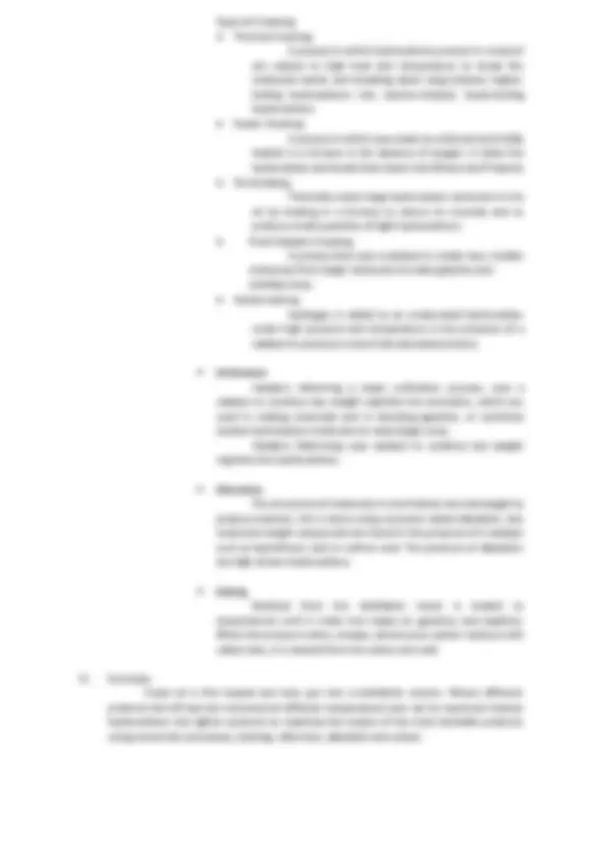



Study with the several resources on Docsity

Earn points by helping other students or get them with a premium plan


Prepare for your exams
Study with the several resources on Docsity

Earn points to download
Earn points by helping other students or get them with a premium plan
Community
Ask the community for help and clear up your study doubts
Discover the best universities in your country according to Docsity users
Free resources
Download our free guides on studying techniques, anxiety management strategies, and thesis advice from Docsity tutors
Petroleum And Petrochemicals Processes Presentation
Typology: Study Guides, Projects, Research
1 / 2

This page cannot be seen from the preview
Don't miss anything!


I. Introduction Petroleum The word petroleum came from the Latin petra which means “rock” and oleum means “oil.” It is a liquid that exists naturally below the surface of the earth and can be processed to provide fuel. Second most abundant liquid on the earth. Fuels that come from decayed living things are called Fossil fuels. It contains hydrocarbons, molecules that contain hydrogen and carbon and come in various lengths and structures, from straight chains to branching chains to rings. Petrochemical These are the chemical products obtained from petroleum refining. Chemical products derived from crude oil, although many of the same chemical compounds are also obtained from other fossil fuels such as coal and natural gas or from renewable sources such as corn, sugar cane, and other types of biomasses. Compounds that are produced using natural gas and petroleum. Hydrocarbon molecules, which include one or more carbon atoms and hydrogen atoms connected, are what make up petroleum and natural gas. Petrochemicals are crucial for our leisure, food, clothing, and shelter. II. Manufacturing The refining or manufacturing of petroleum products and of petroleum chemicals involves two major branches-physical changes or separation operations and chemical changes or conversion processes. ➢ Separation Operations Involves piping crude oil through hot furnaces. The resulting liquids and vapors are discharged into distillation units. ➢ Conversion Processes After distillation or separation operation, heavy, lower-value distillation hydrocarbon can be processed further into lighter, higher- value products such as gasoline.
Types of Cracking Thermal Cracking A process in which hydrocarbons present in crude oil are subject to high heat and temperature to break the molecular bonds and breaking down long-chained, higher- boiling hydrocarbons into shorter-chained, lower-boiling hydrocarbons. Steam Cracking A process in which uses steam as a diluted and briefly heated in a furnace in the absence of oxygen. It takes the hydrocarbon and break them down into Ethene and Propene Vis-breaking Thermally cracks large hydrocarbon molecules in the oil by heating in a furnace to reduce its viscosity and to produce small quantities of light hydrocarbons. Fluid Catalytic Cracking A process that uses a catalyst to create new, smaller molecules from larger molecules to make gasoline and distillate fuels. Hydrocracking Hydrogen is added to an unsaturated hydrocarbon under high pressure and temperature in the presence of a catalyst to produce a more fully saturated product.